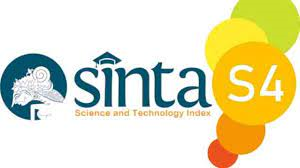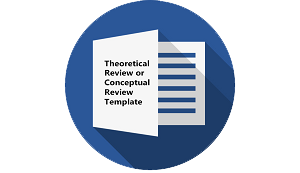Communication Strategies Used by EFL Learners with Different English Achievements in Oral Communication
DOI:
https://doi.org/10.30957/ijoltl.v4i3.606Keywords:
communication strategies, achievement, oral communicationAbstract
This article aims to identify the communication strategies used by the learners with low and high English achievement in classroom oral communication and to describe the difference of the frequency of using communication strategies from low and high achievement learners. This research used a descriptive research. The researcher used a case-study design because the present research concentrated on communication strategies used by the learners with low and high English achievement in a specific setting. The 30 learners of the eleventh-grade learners at SMA Negeri 1 Malang was selected as research subject. The result showed that the learners employed 14 communication strategies. The mostly used by the learners was time-gaining strategy and followed by self-repetition, self-repair, appeal for help, code-switching, circumlocution, approximation, use of all-purpose word, other-repetition, message abandonment, other correction, topic avoidance, use of non-linguistic mean, and literal translation. This research also found that the learners with low English achievement used communication strategies more frequently than the learners with high achievement.
Downloads
References
Al Alawi, R. A. (2016). Communication Strategies used by Omani EFL students. Pyrex Journal of English and Literature, 2(1), 1-11.
Al Hosni, S. (2014). Speaking Difficulties Encountered by Young EFL Learners. International Journal on Studies in English Language and Literature. 2(6), 22-30.
Alrabai, F. (2014). A Model of Foreign Language Anxiety in the Saudi EFL Context. English Language Teaching, 7(7), 82-102.
Avval, S. F. (2012). Communication Strategies in Translation: A Review on the Taxonomies from 1977 to 2011. Journal of Siberian Federal University, 5(6), 768-779.
Brown, H. D. (2000). Principles of Language Learning and Teaching (4th ed.). New York: Longman.
Canale, M., & Swain, M. (1980). Theoretical Bases of Communicative Approaches to Second Language Teaching and Testing. Applied Linguistics, 1(1), 1-47.
Cravotta, J. (2007). Communicative Competence: Intercultural Understanding and International Tourism. The Asian EFL Journal Quarterly, 7, 33-39.
Dornyei, Z. (1995). On the Teachibility of Communication Strategies. TESOL QUARTERLY, 29(1), 55-85.
Ellis, R. (2008). The Study of Second Language Acquisition. New York: Oxford University Pers.
Faerch, C., & Kasper, G. (1980). Processes and Strategies in Foreign Language Learning and Communication. Interlanguage Studies Bulletin Utrecht, 5(1), 47-118.
Grzegorzewska, L. (2015). The Relationship Between Anxiety and The Use of Communication Strategies. Konin Language Studies Journal, 3(3), 295-311.
Harmer, J. (2012). Essential Teacher Knowledge: Core Concepts in English Language Teaching. England: Pearson.
Kongsom, T. (2016). The Impact of Teaching Communication Strategies on English Speaking of Engineering Undergraduates.Journal of Language Teaching and Learning in Thailand, 51, 39-69.
Malasit, Y., & Sarobol, N. (2013, March). Communication Strategies used by Thai EFL Learners. Paper presented at the Proceedings of the 3rd International Conference on Foreign Language Learning and Teaching, Thammasat University, Thailand. Retrieved July 26, 2017, from www.filt2013.org
Maldonado, R. M. (2016). Communication Strategies Used by Different Level L2 English Learners in Oral Interaction. Revista Signos, 49(90), 71-93.
Mesgarshahr, A., & Abdollahzadeh, E. (2014). The Impact of Teaching Communication Strategies on EFL Learners’ Willingness to Communicate.Studies in Second Language Learning and Teaching, 4(1), 51-76.
Mirsane, M., & Khabiri, M. (2016). The Effect of Teaching Communicative Strategy on EFL Learners' Willingness to Communicate. Theory and Practice in Language Studies, 6(2), 399.
Nurdini, R. A. (2017). Communication Strategies Used by EFL Students with High and Low Self-Esteem. Journal of ELT Research, 2(1), 9-14.
Ounis, T. (2016). Exploring the Use of Oral Communication Strategies by High and Low Proficiency Learners of English: Tunisian EFL students as a case study. International Journal of Humanities and Cultural Studies (IJHCS), 3(1), 1077-1098.
Popescu, A. V., & Cohen-Vida, M. I. (2014). Communication Strategies for Developing the Learner's Autonomy. Procedia-Social and Behavioral Sciences, 116, 3489-3493.
Poulisse, N. (1993). A Theoretical Account of Lexical Communication Strategies. In R. Screuder & B. Weltens (Eds.), The Bilingual Lexicon (pp. 307). Amsterdam: John Benjamins.
Rustantya, A. I. (2016). Communication Strategies Employed by The Students of Accountancy Department in English for Specific Purposes (ESP) Class in STIESIA Surabaya. Thesis unpublished Universitas Negeri Malang.
Saeidi, M., & Farshchi, E. E. (2015). The Effect of Communication Strategy Teaching on EFL Learners' Oral Production in Content-based Courses. Theory and Practice in Language Studies, 5(1), 71-78.
Sari, F. R. (2014). Communication Strategies Employed in Collaborative Reading and Speaking Activities Utilizing Movie Synopses. Thesis unpublished Universitas Negeri Malang.
Sener, S., & Balkır, N. B. (2013). The relationship between the use of communication strategies and oral performance of ELT students: Çanakkale Onsekiz Mart University Case. ELT Research Journal, 2(2), 62-69.
Shokrolahi, M., & Ahmadi, A. (2016). Oral Communication Strategies Used by Iranian EFL Learners: Focus on Language Proficiency and Cultural Background. International Journal of Foreign Language Teaching and Research, 4(16), 113-134.
Shtavica, E. (2015). The Effects of Proficiency Level on the Communication Strategiesg among Kosovan and Bosnians Students at Sakarya University. The Online Journal of Quality in Higher Education 2(2), 97-105.
Sukirlan, M. (2013a). Taking a Closer Look at Communication Strategy and its Pedagogical Implication in EFL Class. International Conference on Education and Language,(2)1, 407-415.
Syamsudin, S. (2017). Communication Strategies in Speaking Skill of EFL Learners. English and Literature Journal, 2(01), 126-138.
Tarone, E. (1977). Conscious Communication Strategies in Interlanguage: A Progress Report. TESOL, 77, 194-203.
Tarone, E. (1977). Conscious Communication Strategies in Interlanguage: A Progress Report. TESOL, 77, 194-203.
Ting, S. H., Megawati, S., & Lee, P. (2017). Communication Strategy Use and Proficiency Level of ESL Learners. Journal of Asia TEFL, 14(1), 162-170.
Tuan, N. H., & Mai, T. N. (2015). Factors Affecting Students' Speaking Performance at Le Thanh Hien High School. Asian Journal of Educational Research, 3(2), 8-23.
Uztosun, M. S., & Erten, Ä°. H. (2014). The Impact of English Proficiency on the Use of Communication Strategies: An Interaction-based Study in Turkish EFL Context. Journal of Language and Linguistic Studies, 10(2), pp-169.
Wicaksono, A. (2014). Are Communication Strategies Frequently Used in Speaking Class? English Teaching Journal: A Journal of English Literature, Language and Education, 2(2), 1-8.
Yaman, S., & Özcan, M. (2015). Oral Communication Strategies Used by Turkish Students Learning English as a Foreign Language. Issues in Teaching, Learning and Testing Speaking in a Second Language (pp. 143-158).
Zulkurnain, N., & Kaur, S. (2014). Oral English communication difficulties and coping strategies of Diploma of Hotel Management students at UiTM. 3L: Language, Linguistics, Literature, 20(3), 93-112.
Downloads
Published
How to Cite
Issue
Section
License
Authors who publish with this journal agree to the following terms:
- Authors retain copyright and grant the journal right of first publication with the work simultaneously licensed under a Creative Commons Attribution-ShareAlike 4.0 International License that allows others to share the work with an acknowledgement of the work's authorship and initial publication in this journal.
- Authors are able to enter into separate, additional contractual arrangements for the non-exclusive distribution of the journal's published version of the work (e.g., post it to an institutional repository or publish it in a book), with an acknowledgement of its initial publication in this journal.
- Authors are permitted and encouraged to post their work online (e.g., in institutional repositories or on their website) prior to and during the submission process, as it can lead to productive exchanges, as well as earlier and greater citation of published work (See The Effect of Open Access).












